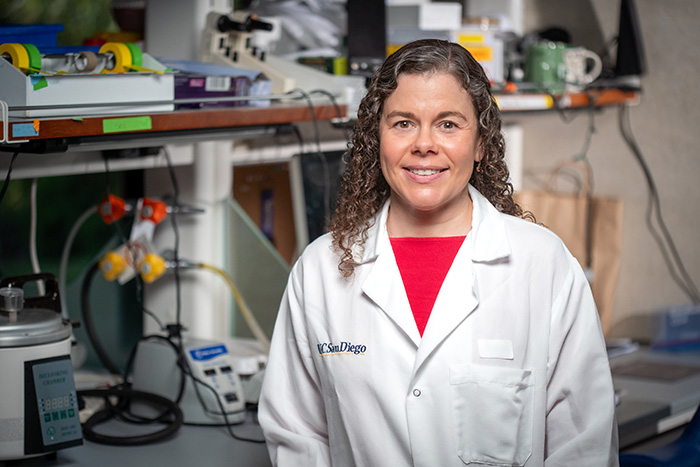
Kraft Heinz announced on Tuesday its plan to eliminate synthetic colorants from its products by 2027. The announcement applies to the company’s products sold in the United States.
The move comes as increasing calls are being made for cleaner, safer food products across the U.S. A growing number of companies have vowed to stop using these synthetic colorants in their foods, and Kraft Heinz is joining this group.
On Tuesday, the company stated that any new products it launches in the U.S. will not contain Food, Drug & Cosmetic (FD&C) colors. It also plans to remove FD&C colors from its existing products sold in the U.S., with the deadline for this removal being the end of 2027.
According to a news release from Kraft Heinz, nearly 90 percent of the company’s products do not contain FD&C colors. A Kraft Heinz spokesperson said the company has existed for 150 years. They stated, “It is in our DNA to continuously renovate and innovate to make sure that we stay relevant and bring value to our consumers.”
The spokesperson added, “We’ve been on a journey to make our products more nutrient – dense, including reducing artificial colors.”
The news follows just months after an announcement from the Food and Drug Administration (FDA). In April, the FDA announced a plan to phase out the use of synthetic dyes by the end of next year. The agency stated its intention to replace these dyes with natural options.
Kraft Heinz is described as a huge food company. The company’s move is raising questions about what this means for consumers. Kraft Heinz plans to remove FD&C colors from its products. These color additives are certified and approved for use in foods, drugs, and cosmetics by the FDA.
Read more about: This Cardiologist Eats (Almost) Everything in Moderation, But These Some Foods Are Weekly Non-Negotiables for a Healthy Heart

The specific dyes being removed include red dye 40, yellow dye 5, yellow dye 6, blue dye 1, blue dye 2, and green dye 2.
FDA officials also said in April that they planned to eliminate these dyes from the U.S. food supply. Darin Detwiler, author of the book Food Safety: Past, Present, and Predictions and a professor at Northeastern University, commented on Kraft Heinz’s decision.
Detwiler called the decision to eliminate artificial dyes by 2027 “a significant and commendable step toward greater food transparency and public health alignment.
He added that the move “reflects growing consumer demand for cleaner labels and supports a broader shift in the food industry toward more responsible ingredient sourcing and formulation.” Detwiler also discussed why dyes are used in food products. He explained that their use is “all about the visual effect.”
Detwiler said dyes “can restore color lost during processing or storage, enhance naturally occurring colors, or create a specific brand – identified visual signature.” He clarified, “However, their use is primarily cosmetic and serves no nutritional or preservative function. The change will affect about 10 percent of the products Kraft Heinz sells, according to the company.
This includes products like Crystal Light, Kool – Aid, Jell – O, and Jet – Puffed, which currently use FD&C colors. A Kraft Heinz spokesperson noted that Heinz ketchup does not use artificial dyes. Kraft macaroni and cheese also removed artificial dyes back in 2016.
Kraft Heinz stated in a press release that it plans to remove colors that aren’t critical. It also intends to replace FD&C colors with natural shades. When matching replacements aren’t available, the company plans to “reinvent” new colors and shades. A growing body of research links artificial dyes with health issues.
Product on Amazon: Crystal Light Sugar-Free, Lemonade, Fruit Punch, Raspberry Lemonade and Wild Strawberry On-The-Go Powdered Drink Singles Mix Variety Pack, 60 Count, Each Packet Dissolves into any 16.9 oz. by TOOZOON
Brand: Toozoon
Binding: Unknown Binding Product Group: Grocery
Price: 9.88 USD
Rating: 4.6 Total reviews: 2606
Features:
1. A variety pack of 60 Crystal Light Powdered Drink Mix Singles Variety Pack includes 15 packets of each fruity flavor lemonade, fruit punch, raspberry lemonade, wild strawberry
2. To prepare, simply empty one packet into a 16.9 oz. bottle or empty one packet into tall glass and add 2 cups of water and shake or stir to combine
3. ZERO-SUGAR & LOW CALORIE – With each packet of lemonade drink mix containing absolutely zero grams of sugar and only 5 or 10 calories per serving
4. Surprise your loved ones with a gift or just perfect for you Rank (BSR): #
Shopping on Amazon >>
Read more about: From Ocean to Table: A Journey of Sea Salt

JJamie Alan, PhD, associate professor of pharmacology and toxicology at Michigan State University, addressed potential health risks. Dr. Alan stated, “The most common potential health risk is an exacerbation of neurobehavioral symptoms in children.”
She advised that “The best way to combat this is to avoid the dye.” Dr. Alan believes this change “is going to be great for parents because they will have more options for their children if they are sensitive to artificial food dyes.”
Research suggests that each dye has its own potential health issues. The now – banned Red No. 3 is noted as having the most research backing its detrimental health effects. Specifically, it has shown an increased risk for cancer in male rats. It has also been linked to behavioral issues and hyperactivity in kids. Schools in California banned this dye in 2024 under the California School Food Safety Act.
Product on Amazon: Soulbriety: A Plan to Heal Your Trauma, Overcome Addiction, and Reconnect with Your Soul
Brand: Audible
Binding: Audible Audiobook Product Group: Audible
Price: 19.68 USD
Shopping on Amazon >>

Detwiler added that “Beyond behavioral concerns, some artificial dyes have also been linked in past research to allergic reactions and, in high doses or under certain conditions, potential carcinogenicity.”
He noted that “While current FDA – approved dyes are generally recognized as safe at regulated levels, the scientific debate, particularly regarding long – term exposure and vulnerable populations, justifies continued scrutiny and precaution.”
Kraft Heinz said in a statement that the change will happen “before the end of 2027.” This suggests the company will phase out dyes by the end of 2027. Dr. Alan described this news as “great.”
She reiterated that “while artificial dyes are generally safe, they can cause harm in a specific subset of individuals.” Health and Human Services Secretary Robert F. Kennedy Jr. and Food and Drug Administration Commissioner Dr. Marty Makary held a press conference in April.
They announced their intention to phase out a host of artificial dyes. The agencies described the action as a “major step forward” in the “Make America Healthy Again” (MAHA) agenda. The MAHA agenda was popularized by Secretary Kennedy Jr. and adopted by the Trump Administration.
Read more about: We Found Some American Foods Banned In Other Countries, And Yep, It’s Wild

The administration received some criticism after it became known that it was not pursuing regulation of chemicals in food. Instead, it was asking companies to comply voluntarily. In April, Dr. Makary said that the Kennedy HHS had an “understanding” with large food corporations. He stated that the corporations would comply voluntarily. Various states have subsequently implemented “Make America Healthy Again” laws. These state laws regulate chemicals in food at the state level.
Some food corporations have indicated that it is significantly easier to phase out problem chemicals from their entire portfolios. They find this easier than complying with state – by – state requirements. A Hershey spokesperson told Bloomberg on Monday that “There is a patchwork of state regulations emerging that is creating confusion and will ultimately increase consumer costs.” The spokesperson added that removing artificial colors is “a natural next step in our program.”
Related posts:
Kraft Heinz Is Eliminating Food Dyes By 2027—Which Products Are Impacted?
Hershey’s, Smuckers, and more fall in line with MAHA over food dyes
Conagra, Nestle USA, J.M. Smucker join growing list of food companies removing artificial dyes




